The Joseph Smith Translation (JST) provides us with many beautiful insights into our Savior, Jesus Christ. In this, and future articles, we will explore some of those key insights.

The scriptural text in these articles will appear as it is printed in the book The Joseph Smith Translation, RedLetter Edition, New Testament. If you would like to follow that text more closely, you can obtain copies of the book, or an eBook version of it, by going to https://jstrle.com. Text in red print are the alterations made by Joseph. The original King James Version (KJV) text is struck-through and printed in blue.
Many of the alterations made by Joseph Smith were simply to clarify a verse, phrase or a word for a modern reader and therefore will generally not be discussed. However, numerous changes provide us with inspirational insights into the scriptures.
Our journey begins with the birth and childhood of Jesus Christ.
None of the JST Gospels significantly modify the events surrounding the birth of the Christchild in Bethlehem. The first notable JST verses addressing the baby Jesus is the presentation of the child at the Temple in Luke 2:25-35. In those verses after being prompted to do so, a certain Simeon arrived at the Temple and was blest to “…take him [Christ] up into his arms…”. There is little change to the story until verse 35 when Simeon prophecies. Like so many JST entries, it requires no commentary to understand.
Luke 2:34-35
34 And Simeon blessed them, and said unto Mary, his mother, Behold, this child is set for the fall and rising again of many in Israel; and for a sign which shall be spoken against,
35 Yea, a spear sword shall pierce through him to the wounding of thine thy own soul also, that the thoughts of many hearts may be revealed.
The next significant JST verses about Jesus’ birth involved the wise men‘s audience with King Herod when they were seeking the Messiah. The wise men must have been people of some consequence to gain such an audience with Herod. Herod probably did not know them beforehand, nor from where they came. Their arrival was not at the manger scene but perhaps some weeks or months later as evidenced by them arriving at the “house” (Matt. 3:11) where Joseph, Mary, and Jesus were residing, as well Herod’s subsequent murderous act of killling all the children in the area who were two years old or younger.
Matthew 3:2-61
1 Ch2:1 Now when Jesus was born in Bethlehem of Judaea, in the days of Herod the king, behold, there came wise men from the East east to Jerusalem,
2 Ch2:2 Saying, Where is the child he that is born the Messiah King of the Jews? for we have seen his star in the East, east, and have are come to worship him.
3 Ch2:3 When Herod the king had heard of the child, these things, he was troubled, and all Jerusalem with him.
4 Ch2:4 And when he had gathered all the chief Priests priests and Scribes scribes of the People people together, he demanded of them, saying, Where is the place that is written of by the Prophets, in which where Christ should be born? For he greatly feared, yet he believed not the Prophets.
5 Ch2:5 And they said unto him, It is written by the Prophets2, that he should be born in In Bethlehem of Judea; Judaea: for thus have they said, it is written by the prophet,
6 Ch2:6 The word of the Lord came unto us, saying, And thou Bethlehem, which layeth in the land of Judea, Juda, in thee shall be born a Prince, which art not the least among the Princes princes of Judea; Juda: for out of thee shall come the Messiah, a Governor, who shall save that shall rule my people Israel.
The interactions among the wise men, Herod, the chief Priests and Scribes, in these verses is revealing. In the JST reading of Matthew it is crystal clear that the local political and religious leaders and experts were well versed in the coming of the Messiah, whom Herod calls “Christ”. They knew the location and the events that would surround his birth. The verses in Matthew 3:1-6 make it even more incredulous when, in later years, Jesus confronts these religionists while they attempt to discredit him and who he was.
The greatest injustices brought against the Savior were by those who knew exactly who he was, if not in actuality, then most certainly academically. They knew that he was fulfilling all that was “…written by the Prophets”. Their knowledge, and the consequences of their crucifixion of the Savior, and the persecution of his Church, were felt for several millennia.
Joseph’s alteration of the word “King” to “Messiah” in the phrase “King of the Jews”, is telling, particularly if that indeed was the original intent or writing of Matthew 3:2 & 6. How the Prophet actually received inspiration to alter words or verses may have occurred in several ways. He certainly became intimately familiar with the Spirit’s inspiration while translating The Book of Mormon which was published just weeks prior to turning his attention to the JST, or as they referred to it, the New Translation. Joseph was also personally familiar with numerous biblical and Book of Mormon prophets and may have seen in vision much of what they said, wrote, or did during their mortal lives. A perfect example of Joseph’s visionary understanding is found in D&C 7 where Joseph saw John recording, and then hiding his request of the Lord to remain on the earth.
In the following verses we get a clearer picture of the Savior in his youth. Once again, little or no commentary is required to understand the additions Joseph made.
Matthew 3:23-26
Ch2:23 And he came and dwelt in a city called Nazareth; that it might be fulfilled which was spoken by the Prophets, prophets, He shall be called a Nazarene.
24 And it came to pass, that Jesus grew up with his brethren, and waxed strong, and waited upon the Lord for the time of his ministry to come.
25 And he served under his father, and he spake not as other men, neither could he be taught; for he needed not that any man should teach him.
26 And after many years, the hour of his ministry drew nigh.
A careful reading of Matthew 3:23-26 expands our understanding of the Savior’s period of growth, his behavior as a young man, and how his learning was accomplished. Most assuredly his teachers included Angels and his Father-in-Heaven.
In conclusion, it is clear that the JST alterations of these scriptures regarding the Savior’s birth and youth enhance our understanding of those events. While not earth shaking nor doctrinally expansive, they add little by little to our understanding and our love for our Savior, Jesus Christ.
Our next article with the JST will discuss the baptism and trials of the Savior as he enters his ministry. Stay tuned.3
1 The chapter and verse notation used here is peculiar to the JST, Red-Letter Editions. In this instance, verses which were in Matt. 2, became Matt. 3, in the JST. This is shown by marking in red the JST positioning of the chapters and verses while indicating in blue with a strike-through, the original KJV locations.
2 Scholars have determined that this is most probably a paraphrased or alternate Jewish reading of Micah 5:2.
3 Again, if you wish to read along with the JST, Red-Letter Edition, New Testament, obtain a copy from https://jstrle.com.





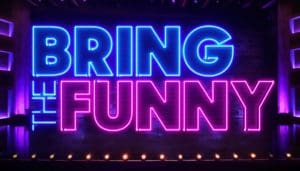


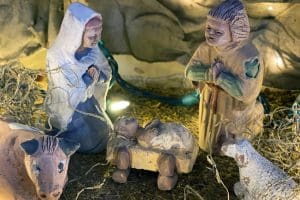



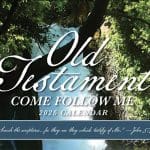

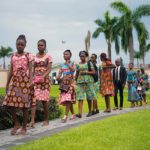

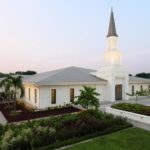


EricAugust 22, 2025
Luke 2:7, which replaces "inn" with "inns." President Nelson spoke about this at a BYU devotional back in December 2002. To summarize what he said, the word that "inns" comes from connotes a room rather than an entire building like a hotel. Travelers would stay at caravansaries, which could accommodate their animals. A caravansary was shaped like a hollow square or a U, with the courtyard in the center and all the rooms (inns) facing into the courtyard so guests could keep an eye on their animals. Quoting President Nelson: "Because the guest chambers surrounding the courtyard were filled, Joseph possibly made the decision to care for Mary’s delivery in the center courtyard of a caravansary—among the animals. There, in that lowly circumstance, the Lamb of God was born." Luke doesn't mention a stable, but he does mention a manger, and what President Nelson says here still fits what Luke's account is telling us. I think it makes the story better. Jesus was born into an even lower setting than we've always imagined with the stable (I've heard plenty of people suggest that a private stable was actually a better birthplace than a crowded inn). It also makes it easier for the shepherds to find Him, since looking for a baby in a manger at little Bethlehem's caravansary would be far easier than searching all the stables in town.
Haze K.August 21, 2025
Matthew 3:2-6 in your article should read Matthew 2:2-6. To the best of my limited understanding, of course.